Fauna pipe: installation and repair
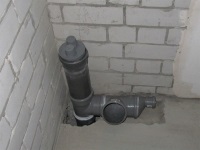
When building a private home, you need to consider many nuances that you would never think about if you decided to settle in a city apartment. In large, multi-family houses, the design of engineering networks falls on the shoulders of construction companies, and you do not need to know how it all works. However, as soon as you decide to get out of the hustle and bustle of the city and start building your own house, you will face many problems related, first of all, to the arrangement of ventilation, sewerage and water supply systems. In the functioning of the last two systems a big role is played by the chimney. Today we will talk about it.
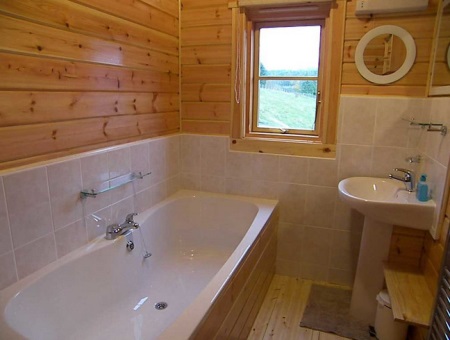
Application
Faecal pipe or faecal standpipe - is a pipe that connects the sewer riser to the atmosphere. It goes out on the roof of the building and serves to equalize the pressure in the sewer system.
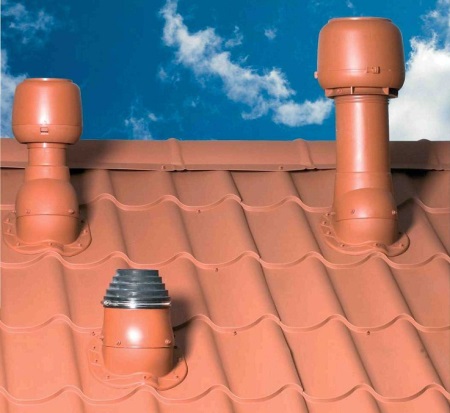
When a large volume of water goes down the drain, there is a vacuum inside the system and without the air flow that a flush pipe provides, the stench will penetrate directly into the house. It protects unpleasant odors is a water trap, which is formed in the bend of the sewer pipe. The flush pipe regulates the normal operation of the odor trap, which can "break" under pressure.Thus, the flush pipe is an essential element of the ventilation and sewage systems of a residential house.

Is it always necessary to have a flush riser?
If we still could not convince you to install a flush riser, you can do without it, but this will have to meet two important conditions. First, the house must be no higher than two floors, and second, the house can't have more than one toilet and one sink. However, if you are satisfied with these requirements, it does not mean that you can safely begin to design a sewer system without a flush pipe, not worrying about the emergence of bad smells. It is necessary to consider several other important factors.
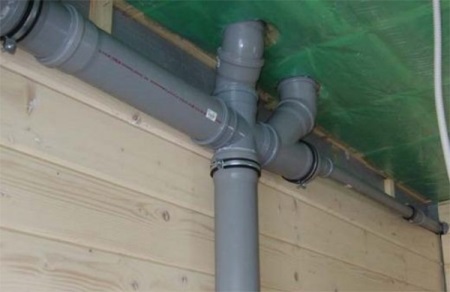
So, the flush pipe is necessary if:
- the sewage pipe is less than 0.5 cm in diameter;
- you use a self-contained sewage system;
- in the house, or on its territory there is an artificial reservoir or other device maintenance of which involves periodic drainage of large volumes of water into the sewer system, such as a swimming pool.

Requirements for installation
The installation of flush pipes must take into account the two main requirements:
- The diameters of the flush pipe and sewer riser must match within a millimeter;
- The place where the faecal pipe will go out must be carefully thought out. Usually, the flue pipes are led out onto the roof; it is important to consider the direction of air flows so that sewer vapors escape in the opposite direction to balconies, windows and residences.

Using waste water valves
You have probably heard that the contents of sewage pipes can enter the apartment through the toilet bowl. This usually occurs when serious errors have been made in the design of the sewer system, for example, the wrong angle of inclination of the pipe. The cause can also be a severe clog caused by large debris, mice or rats in the sewer system. If you do not want to one day witness your toilet spewing fecal matter, you should take care of this in advance, when installing the flush pipe.
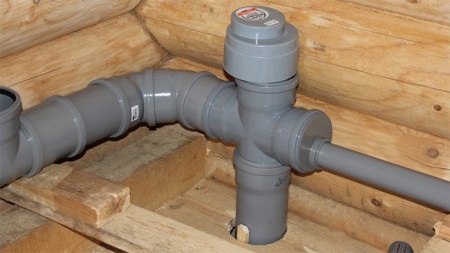
A backflush valve is designed specifically to prevent sewage from returning to your plumbing fixtures. It is usually installed outside or inside the flush riser. It works as follows: when you flush the water, the valve cover opens and lets it and everything it carries away, and then, under the pressure of a steel spring, it closes tightly.
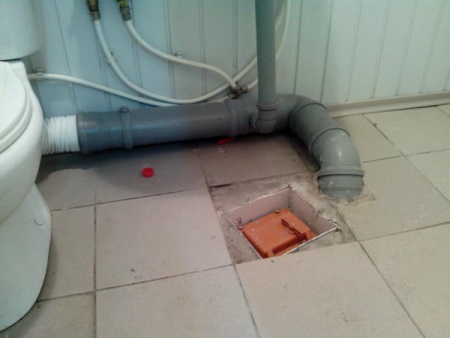
When installing such a valve, you must take into account the fact that its lid must open against the movement of water. Only in this case, it will reliably block the sewage flows in the opposite direction.
Principles of designing the flue ducting
You can design the flue ducting yourself. To do this you need to have at least minimal knowledge in the field of engineering systems and study the requirements of SNIP.
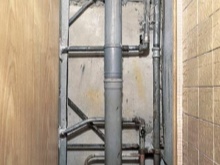
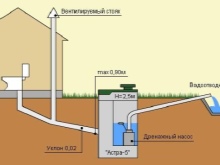
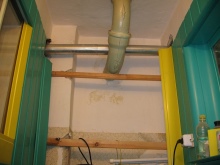
In general, the principles of designing the system of flue pipes are as follows:
- The slope of horizontal pipes in the direction of sewer gas flow should be at least two hundredths of a percent;
- A single faecal riser pipe can be used to connect several sewer pipes;
- The direction of the flush pipes can only be changed if the change is made above where the last equipment connected to the riser pipe is located;
- to connect multiple pipes, use a flush tee; attach it at a 135 or 45-degree angle in the direction of the gas flow;
- The direction of the flue ventilation may only be changed by means of a flue duct and at a 135-degree angle.
- The distance from the flue pipe to balconies and windows must be taken into account: in the horizontal plane it must be at least 4 meters;
- The flue pipe must be located separately from the ventilation system and the chimney;
- The lower part of the flue pipe must be located in a warmer room and the upper part in a cooler room; in this case the draught will be stronger.
Recommendations for pipe installation
After preparing a project, you can proceed directly to the installation of the flush riser. To begin with, procure all the necessary equipment. You will need: flush and connection pipes, ventilation duct and fittings. The installation of a flush ventilation system should be carried out in several stages.
- Preparatory work. You may already have an old sewer pipe system in your home. If they are made of cast iron, it is better to dismantle them and replace them with more modern ones. Before you start work, make sure that the riser is covered.
- Installing the waste gas riser begins with the foundation of the house. In the supporting wall, make holes and, with the help of metal clamps, fix it on the header pipe.
- If the plumbing is already installed, connect the toilet to the wc riser, using the wc outlet. Seal the connection with a ring-shaped gasket.
- Use installation foam or mineral wool to soundproof the structure.

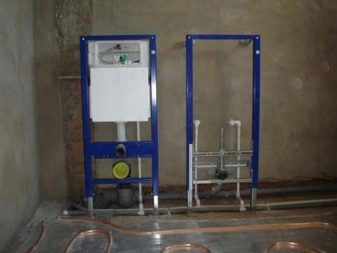
Watch the following video on how to install the flush riser.
Common installation mistakes
Guided by good intentions, many people try to arrange their own way of the system of the faecal ventilation in the hope that it will only improve its performance. However, more often than not, such changes in the project lead to very regrettable consequences. Consider the most common mistakes:
- The organization of the outlet of the flue pipe in the attic, not on the roof. If the sewer gases will not immediately escape into the atmosphere, sooner or later they will accumulate under the roof and gradually begin to penetrate into the living space.
- Installing the flue pipe on the inside of the load-bearing wall. If the faecal standpipe goes on the outside, there will be problems with condensation.
- Replacing the protective flue grill on top of the pipe weathervane or decorative weather vane. Despite the more aesthetic appearance, the draft from this does not become stronger, but, on the contrary, reduced, resulting in unpleasant odors spread throughout the house.
Repair
Repair of flue pipes, as a rule, comes down to replacing the old cast iron pipes with new plastic ones. It is better to do it under the guidance of an experienced plumber, calling for a couple of helpers. Cast iron - the material is incredibly heavy, and at the same time, fragile, so you should handle it very carefully. Be extremely careful, as there is always a chance of damaging your own health or the entire sewer system. In addition, if you are replacing the flush pipe in a multi-storey house and you live on one of the lower floors, ask the experts whether in this case your new plastic pipes can withstand the pressure of the system.

For the work you will need a heavy sledgehammer, a grinder, a drill and any other tool you deem necessary to use, because the dismantling of cast iron pipes - not an easy task. Having dismantled the old pipes, you can proceed to the installation of new ones. How to do this, we have described in detail in the previous sections. We hope that our instructions will help you without much trouble to install a new flush ventilation system!





I have a wrongly installed flue pipe, so there is often condensation.